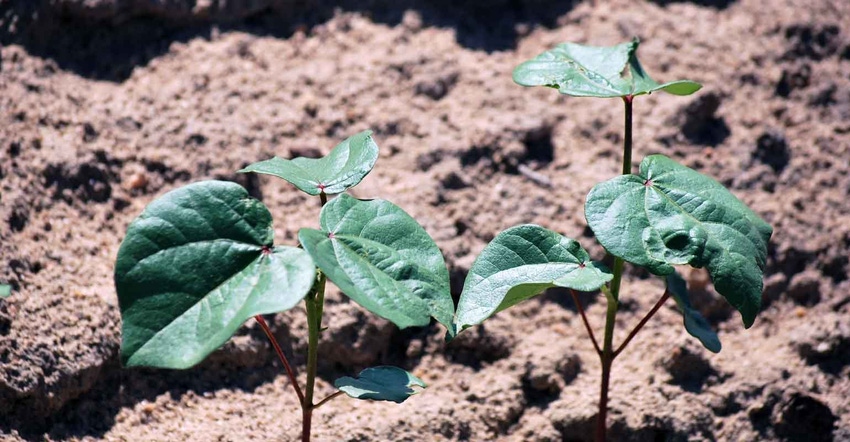
Alabama’s cotton crop is behind, facing rising heat and falling moisture.
Steve Brown is the cotton specialist for the Alabama Cooperative Extension System. In the May 13 issue of the Alabama Cotton Shorts, he said, it was scary dry in much of Alabama.
“We’ve stopped planting some of our research trials because of drying conditions, but some farmers are pressing forward. Cotton seed can stay in the ground waiting for rain, but, of course, the big concern of dusting in is the possibility of receiving only a light rain shower that germinates the seed but is insufficient to sustain the seedling.”
As of May 16, according to the National Agricultural Statistics Service office in Alabama, cotton growers did press on planting, with an estimated 54% of the cotton acres planted, compared to 25% planted as of the week of May 9. According to the USDA Prospective Planting report, Alabama cotton growers plan to plant 420,000 acres, or 4% more than last year.
“Recent weather has been comfortable for humans – cool in the morning, low humidity, breezy, bright and sunny – but increasingly challenging for young crops. The forecast calls for temperatures into the 90s, so plant stresses will only increase,” he said.
On May 6, Brown walked a river-bottom field near Tallassee, about 30 mile east of Montgomery. The cotton was no-tilled into good moisture in corn residue the week earlier.
“The stand was almost present but so was a 15-plus mile per hour parching wind that was rapidly drying the soil surface. That morning a much-hoped-for front had sped across the state with a lot of blow but little rain, leaving behind disappointment and thirsty fields,” he said.
He checked the field again May 11. He said the stand was surprisingly good but the cotton looked stressed.
“What I didn’t check for and should have were thrips. The small, cotyledon cotton struggling along was the only green in the field, so I wonder if thrips were congregating on the young plants. The crop certainly doesn’t need another stress,” he said.
In the May 13 post, Scott Graham, Alabama Extension entomologist, said, “In general, we are expecting thrips pressure to be like last year.”
Graham had received calls from growers asking what insecticide to use when making thrips sprays, he said, particularly in dry fields and fields with historic issues with spider mites.
“Availability will likely drive some decisions on what to use, and softer chemistries may not be readily available, so be prudent and ensure that thrips sprays only go out when needed,” Graham said.
Alabama cotton growers can use the cotton thrips model to see specific localized predictions for thrips.
With dramatically increased fertilizer and input costs and historically high cotton prices, Brown said growers and other cotton specialists across the region know this year is a high risk, high reward year. “But at present, the biggest, immediate hurdle is getting the crop started,” he said.
About the Author(s)
You May Also Like






